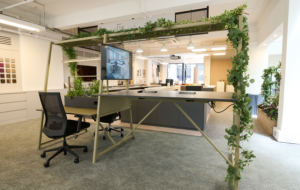|
Fascinated by the historical resonance of objects, the Swedish designer has created her own mythical artefacts Many designers profess to be driven by narrative, but for Hilda Hellström storytelling is at the heart of every object she makes. Whether responding to mythical rituals or nuclear disaster, her vases, urns and monuments are almost secondary to the stories around which she constructs them. Stemming from a background in fine art, the Swedish designer’s narrative outlook was nurtured by the Design Products MA at the Royal College of Art. “My projects often didn’t become an end product, they were more about research in shape or process,” she explains. “The end result wasn’t the most interesting part. At the RCA I found a better balance between the design and the art world.” Hellström began investigating objects that function as by-products of historical events. She found Naoto Matsumura, a rice farmer from the Japanese region of Fukushima still living in the nuclear exclusion zone following the 2011 earthquake. Pitching himself as a guardian of this desolate landscape, Matsumura piqued Hellström’s curiosity and in 2011 she flew out to Japan to talk to him about his experiences and witness the site. “It was such a dangerous zone but I’ve never felt so alive,” Hellström says. “You live in the present in a completely different way.” Matsumura’s livelihood had been decimated by the fallout, which will affect agriculture in the area for the next 30 years. To highlight the scale of the tragedy, Hellström collected radioactive soil from the site, and once back in the UK, mixed it with an invisible PVA glue binder to craft a series of artefact-like vessels inspired by the crops traditionally found in the area. Parallel to this project, Hellström began working on her trademark sedimentation vases, large urn-like structures made from swirling topographies of pigmented quick-drying jesmonite, which are then shaved or CNC-cut to reveal the pattern beneath. Hellström is the daughter of a carpenter and many of her early products were wooden, but using malleable materials has allowed her to play with more abstract ideas. “Wood is such an honest material, especially for a Scandinavian. It’s so easy to see the whole process in the finished object. My research is the opposite – using malleable materials is like creating your own reality.” An object’s ability to influence our sense of reality underlines both projects, although the two look very different. “I’m interested in anthropological museums and how we choose to represent our history,” she explains. “The mythical objects I create look like something you might see in a museum, thinking they are part of our ‘truth’.” Malleable materials have dominated Hellström’s practice in the past four years. Commissioned by Swarovski as part of the Design Museum’s Digital Crystal exhibition in 2012, Hellström responded with a hanging monument formed by merging a huge chunk of her manmade stone with one of the largest crystals Swarovski has ever created. Hellström imported an area of the Tyrolean Mountains in Austria (Swarovski’s birthplace) into SketchUp via Google Maps, and CNC-cut the cast stone and crystal following its contours. For an accompanying film, she devised a mythical pagan backstory about how the area’s inhabitants used the vast object. Last year, she collaborated with jewellery designer Bec Brittain to create a series of polished metal and jesmonite sculptures. The move has clearly sparked investigations into new material practice. At the 2013 Vienna Design Week, Hellström moved away from layered jesmonite to create a pagan-themed board game – a circular furnace with geometric canals of molten pewter and floating aluminium balls. A large award from Gothenburg Museum will see her create two new pieces for a solo exhibition next year, where she hopes to experiment with pyrite (fool’s gold) and anthracite, a dark, shiny form of coal that is part-way to becoming diamond. The minerals interest her in terms of structure (forms of sedimentation not unlike her own process) and their philosophical implications. “We value diamond because of the pressure and time it takes to form, but fool’s gold is the same. It doesn’t really matter what something is, but the structure of experience we form around it.” |
Words Laura Snoad
Images: Hilda Hellström |
|
|
















